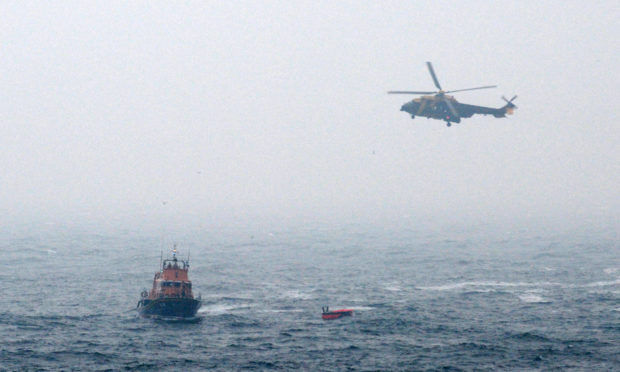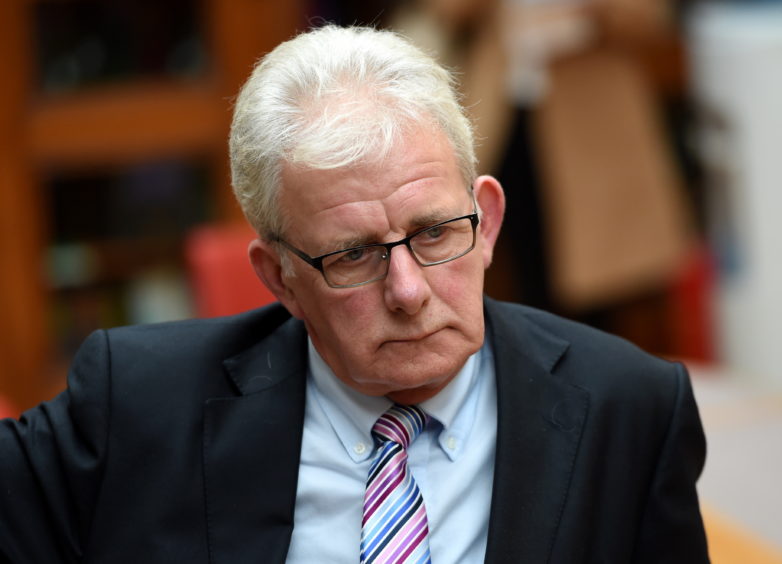Pilot error led to a fatal helicopter crash off the coast of Shetland, the north’s most senior sheriff has ruled.
Sheriff Principal Derek Pyle has today published his determination into the tragedy involving a Eurocopter AS332 L2 Super Puma helicopter, which crashed on approach to Sumburgh Airport in the late afternoon of August 23, 2013.
He ruled the pilots had failed to monitor their instruments effectively, but said the reason why they did so was still unknown to this day – as both had no or little memory of the vital moments prior to the accident.
He said there was “plainly no wilful neglect” by Captain Martin Miglans and co-pilot Alan Bell, adding: “Rather, there was, as one witness described it, a perfect storm of circumstances which resulted in all the safety barriers in place not preventing – or remedying – his [Capt Miglans] one failure, to maintain the correct speed.”
They were flying 16 workers from oil platforms in the North Sea to Aberdeen, but were to make an unscheduled stop at Shetland to refuel after calling at Borgsten Dolphin.
The aircraft crashed just under two miles west of Sumburgh at 5.17pm, killing four people.
The passengers who died on the day were: Sarah Darnley, 45, of Elgin; Gary McCrossan, 59, of Inverness; Duncan Munro, 46, of Bishop Auckland; and 57-year-old George Allison, of Winchester.
A fifth passenger, Samuel Bull, 24, from the London area, committed suicide four years later after suffering post-traumatic stress syndrome as a result of the tragedy.
Sheriff Principal Pyle, who had heard 15 days of evidence during a virtual hearing, said in his ruling: “The flight crew of the helicopter failed to maintain the target approach airspeed [80knots] and the stabilised approach criteria, contained in the operator’s operations manual, during the latter stages of the non-precision approach to Sumburgh Airport.
“This was due to the flight crew not effectively monitoring the helicopter’s flight instruments, thereby allowing the helicopter to enter a critically low energy state resulting in the loss of control of the aircraft.”
Scientists to examine brain’s ability to continuously monitor systems
He found no faults with the helicopter or any other system within the offshore aviation industry which could have contributed to the crash and deaths, and thus made no recommendations.
He added: “This was a dreadful accident with long-term repercussions for the survivors and the families of the deceased which no determination by this court can properly describe.
“While it is the case that the cause of the accident was pilot error, it is not known why.
“One possible reason is in the developing knowledge of the inability of the human brain continuously to monitor flight instruments in all forms of aircraft, particularly in automation modes.
“The aviation industry and regulatory authorities are looking closely at this developing science.
“The expert inspectors from the Air Accident and Investigation Branch of the Department of Transport concluded that the accident could have occurred with other pilots flying.”
The sheriff principal referred to evidence heard throughout the proceedings, including the black box recording, but said it was difficult to come to “definite conclusions in a comprehensive way” about what happened.
Sheriff says “perfect storm” of circumstances contributed to crash
He said: “[Capt Miglans] counsel readily accepted that there was a failure to maintain airspeed and a failure to monitor the instruments. On one view, Captain Miglans had little choice but to accept that, standing the technical evidence.
“But my impression is that he went further and accepted that for good or ill he was ultimately responsible for the safety of his fellow pilot and passengers and short of there being a mechanical defect in the helicopter itself he must by definition be responsible for the crash. In my opinion, that is correct.
“But it is only part of the story. He was a pilot of huge experience with a first class record of flying over many years. There was plainly no wilful neglect.
“Rather, there was, as one witness described it, a perfect storm of circumstances which resulted in all the safety barriers in place not preventing – or remedying – his one failure, to maintain the correct speed.
- October 20, 2020
- October 20, 2020
- October 19, 2020
- September 14, 2020
- September 11, 2020
- September 10, 2020
“As for Mr Bell, on the evidence it can be accepted that he did not notice the critical reduction in air speed, but the reasons for that are unknown and cannot now be known. For all we know, he may have been performing other duties which prevented him doing so.”
Mr Bell has been unable to recollect the circumstance leading up to the accident ever since, and was deemed unfit to give evidence at the inquiry.
Sheriff Principal Pyle said evidence had been heard that “the human brain has inherent difficulties in effectively monitoring aircraft instruments, particularly when automation, such as auto pilot, is engaged, albeit that in only very exceptional cases and circumstances might these difficulties have fatal consequences”.
He added: “There is one final point to make. It struck me that one explanation of the commander’s behaviour was that he mistakenly thought that they had reached the airport, rather than still being 1.7 miles from it.
“[On evidence of the black box] the verbal reaction of the commander on coming out of the cloud immediately before the crash could be interpreted as surprise because they were not over land.”











